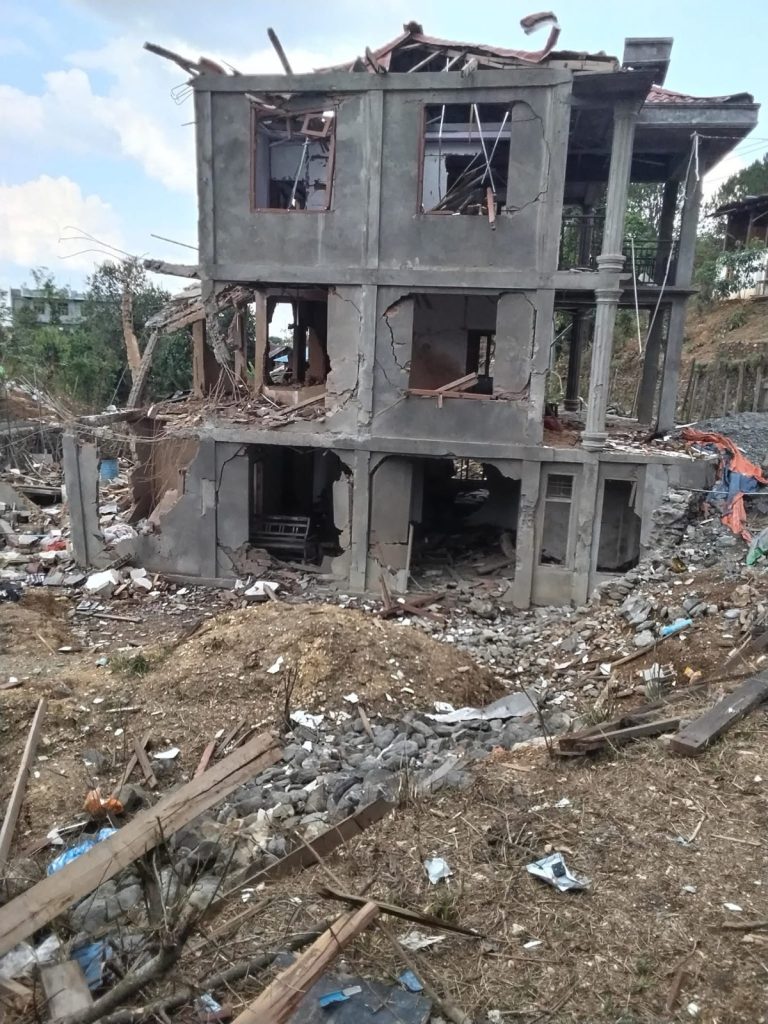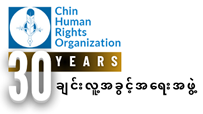A Targeted Campaign Against Civilian and Governance Structures
19 April 2025: Between 2 and 18 April 2025, in the immediate aftermath of a devastating earthquake, the Myanmar military junta launched 17 separate airstrikes across four townships in Chin State—averaging one attack per day.
This escalation, occurring during a moment of humanitarian vulnerability, reflects a deliberate and chilling strategy—not just of military aggression, but of calculated state terror aimed at destabilizing local governance and obliterating public infrastructure in resistance-controlled areas.




Human Cost
The airstrikes killed 13 civilians, including:
- 7 children
- women
- 4 men
An additional 17 civilians were injured, including:
- 6 children
- 5 women
- 6 men
The high number of children among both the dead and injured speaks volumes about the indiscriminate nature of these attacks. This is not collateral damage—it is the systematic punishment of communities already displaced and traumatized. It is a clear violation of international humanitarian law, particularly the principles of distinction, proportionality, and civilian protection.
Deliberate Destruction of Civilian Infrastructure
A total of 83 properties were destroyed or damaged, including:
- 62 homes – displacing dozens of families and deepening the humanitarian crisis.
- 3 churches – reflecting a disturbing pattern of targeted religious persecution in a predominantly Christian region.
- 1 school – depriving children of education and representing an attack on the community’s future.
- 17 public buildings – likely including local administrative offices and health facilities vital to grassroots governance.
This is not random destruction. It is a targeted assault on the civic backbone of Chin society.
Strategic Intent: Why Now?
The timing of the strikes—just days after an earthquake—reveals a sinister, dual-purpose military strategy:
1. Undermining Local Governance: Many of the destroyed public buildings served as administrative centers for the resistance and local service delivery mechanisms. These represent functioning alternatives to junta rule—symbols of autonomy and legitimacy the junta cannot tolerate.
2. Obstructing Humanitarian Recovery: By bombing homes, churches, and schools during a disaster, the junta is weaponizing humanitarian crises to break morale, discourage return and reconstruction, and prevent international aid from reaching survivors.
A Pattern of Deliberate Targeting
These airstrikes are part of a broader and well-documented pattern: the systematic bombardment of ethnic minority areas outside junta control. The focus on social, religious, and civic infrastructure highlights that this is not merely a war against armed resistance—it is a war against communities, and against the very concept of self-governance and dignity.
Recommendations
What we are witnessing is not just a natural disaster compounded by war—it is a man-made catastrophe, engineered to crush the spirit of a people determined to govern themselves.
The international community must:
- Unequivocally condemn these attacks as war crimes.
- Demand unimpeded humanitarian access to affected areas.
- Recognize and support the locally led democratic governance structures.
- Pursue accountability mechanisms for these grave violations of international law.
- The junta is not just targeting resistance—it is attacking hope itself. And the world must not look away.
